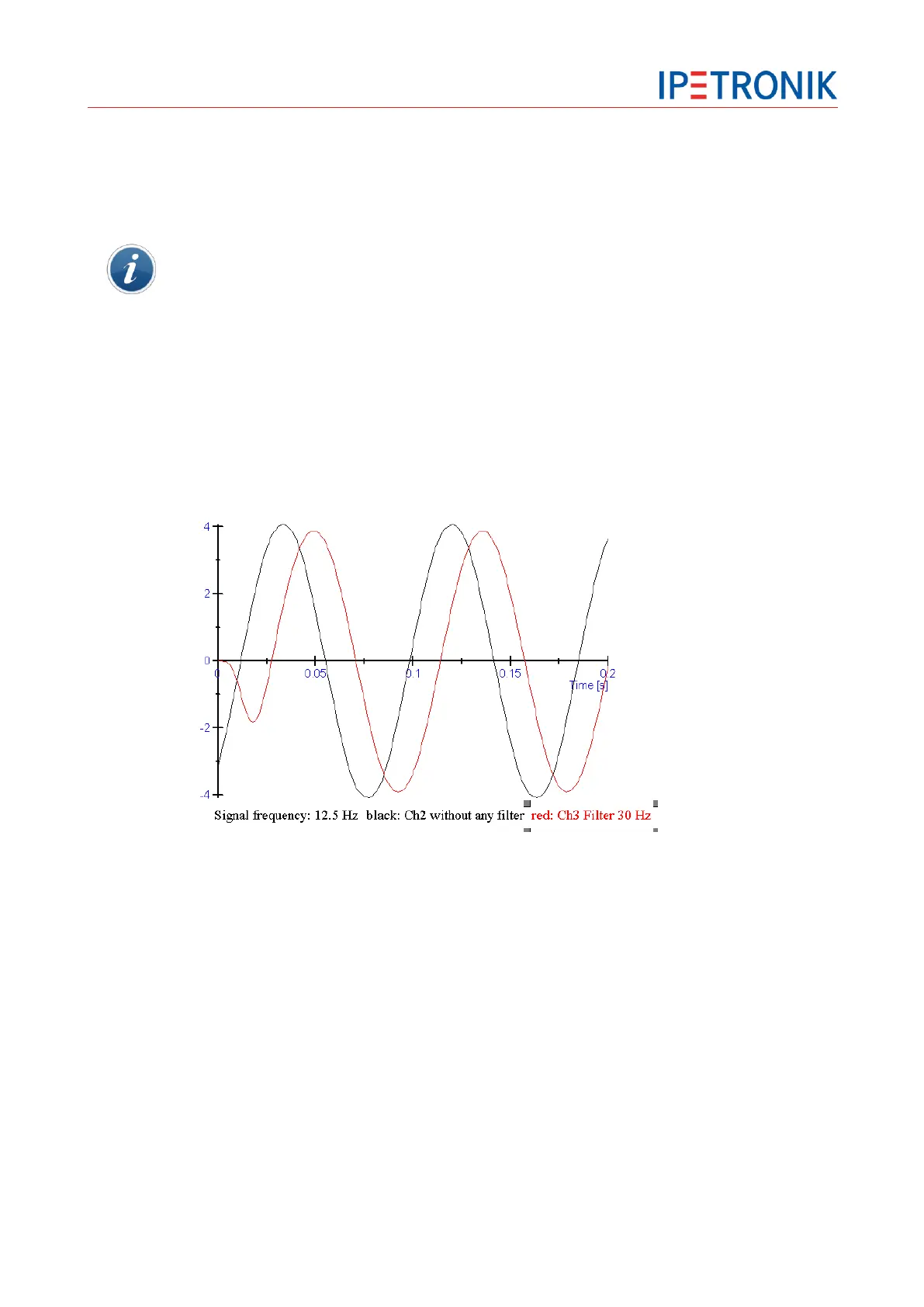Filters of analog measuring amplifiers are used for avoiding interrupting frequencies (frequency
spectra, which do not contribute to the signal and/or which cannot be processed by the system).
A low pass filter, which reduces the amplitudes of the frequencies above a specific cut-off
frequency, is usually used for avoiding negative effects to the useful signal. The threshold in the
range of the cut-off frequency (the barrier between the useful and the unrequested signal) is
continuous.
Depending on the measuring task, the following filter properties are to be respected:
Useful signals below the cut-off frequency are also damped. (A damping of 3 dB at the cut-off frequency
means a reduction of the initial signal of 30 %.)
Filters always cause a time shifting (phase shifting) between the initial signal and the filtered one. The
value of the phase shifting depends on the type of filter and the filter order (pole number).
The image above shows the result of two inputs with the same input signal of 4 V amplitude and 12.5 Hz
frequency.
Channel 2 black without filter
Channel 3 red with 30 Hz hardware filter (Bessel type)
Channel 3 clearly shows the damping, the phase shifting, as well as, the start oscillation of the filter.
